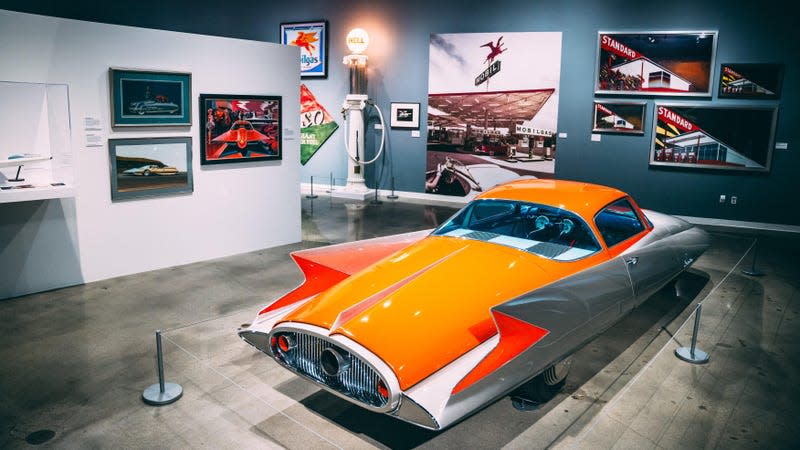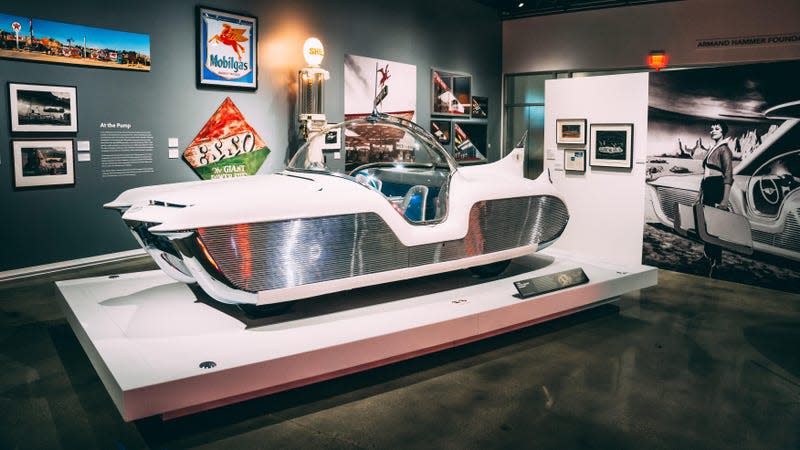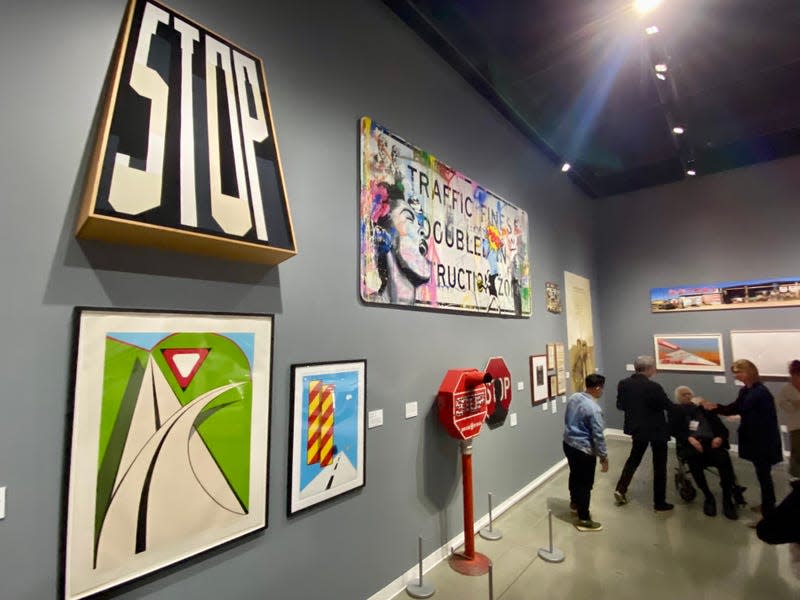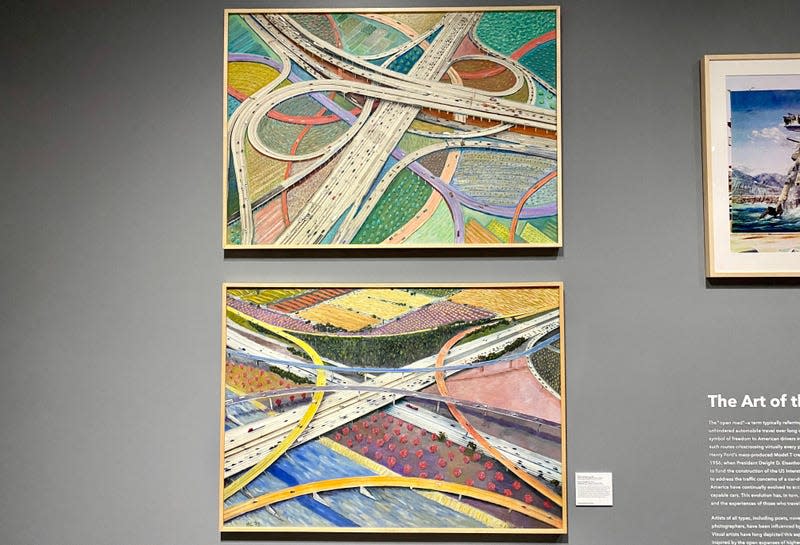The Petersen Museum’s New Exhibit Is Proof The Jet Age Was Peak Automotive Americana

The Armand Hammer Foundation Gallery in the Petersen Automotive Museum always houses beautifully curated exhibits brimming with automotive art and history, and the Los Angeles museum’s latest exhibit is no exception. Called “Eyes on the Road: Art of the Automotive Landscape,” every inch of the new exhibit is filled with incredible automotive artwork including works by Andy Warhol, the oldest remaining Route 66 sign, vintage footage of the streets of Los Angeles, four jet-age concept cars, and a ‘60s-era Disneyland Autopia car.
In “Eyes on the Road,” the Petersen celebrates invisible art, or forms of art that we might not immediately understand as art. A major theme throughout is the origin of standardized U.S. Interstate freeway signage and the artistic influence behind them, as well as artwork inspired by those signs. All of the concept cars in the exhibit represent a vision, an optimistic view of the future of the automobile. Different Los Angeles freeway interchanges are reimagined as colorful dreamscapes while colorized point-of-view archival footage of LA city streets is projected on the back wall. It’s a small exhibit, but an impactful one.

The exhibit is organized into five sections: one that showcases wild vintage concept cars, one that focuses on roadway signage, one that’s dedicated to gas station artwork, one dedicated to the highway system, and one dedicated to street art. The concept car portion of the exhibit is centralized, and showcases the four concept cars and other awesome historical design concepts that will make you think old car designers were also big fans of psychedelic drugs. Among the concepts are a teardrop-shaped fever dream of a car called the 1934 Dymaxioncar, and the Jetsons-lookalike 1956 American Motors Astra-Gnome that stole the show in my eyes.
Beyond that there’s the sign section, which sounds dull but is actually fascinating; the “at the pump” section that celebrates the American automotive service station, and the street art section that has a few pieces. Some of the art is actually from the era it’s referencing, while other works are from recent decades.

As always at The Petersen, there are several other exhibits included with your ticket, like a glorious Porsche exhibit, a breathtaking look at vintage coachbuilt cars, and several others. If all of that bores you, you can always get access to the famous Petersen Vault which houses hundreds of rare, historically significant, weird, funky, and custom cars, bikes, and concept vehicles. It’s a smorgasbord of the world’s most tantalizing automotive treasures all in one giant basement.
The new exhibit is open to the public now, and it will remain at the Petersen until November of this year. If you’re planning to visit LA or you live nearby, a day at the Petersen is always a fun and enriching experience for people even remotely interested in cars.





 Yahoo Autos
Yahoo Autos 